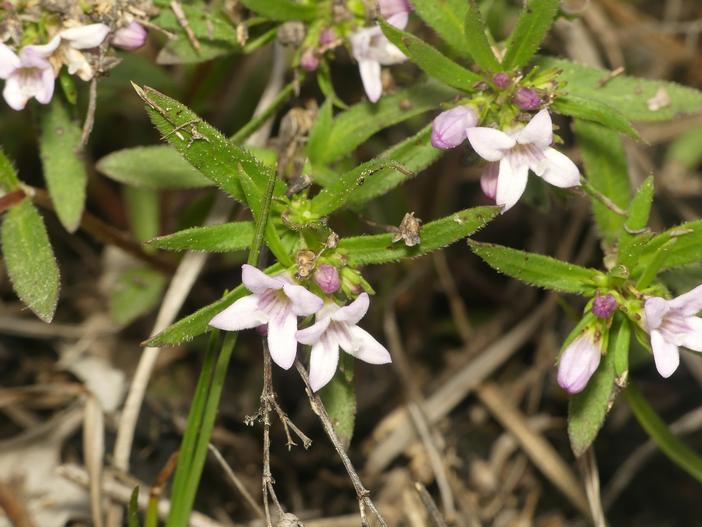Canadian Summer Bluet
(Houstonia canadensis)
Canadian Summer Bluet (Houstonia canadensis)
/
/

Shaun Pogacnik
CC0
Image By:
Shaun Pogacnik
Recorded By:
Copyright:
CC0
Copyright Notice:
Photo by: Shaun Pogacnik | License Type: CC0 | License URL: http://creativecommons.org/publicdomain/zero/1.0/deed.en | Uploader: Nonenmac | Publisher: Wikipedia Commons

































Estimated Native Range
Summary
Houstonia canadensis, commonly known as Canadian Summer Bluet, is a perennial herb native to moist meadows, grassy slopes, and open woodlands, primarily in the Eastern United States. It typically grows to a height of 0.5-1 feet (0.15-0.3 meters) and can spread about 1 foot (0.3 meters) wide. This delicate plant forms low tufts of foliage from which emerge slender stems topped with clusters of tiny, tubular flowers that are most commonly white but can also show hues of pink and purple. The blooming period occurs in late spring to summer, and the flowers are quite showy despite their small size.
Canadian Summer Bluet is valued for its dainty flowers and its ability to thrive in less-than-ideal soil conditions, making it a versatile choice for rock gardens, borders, and native plant gardens. It is also used as a ground cover due to its spreading habit. This plant prefers consistently moist, well-drained soils and can tolerate both full sun and partial shade, which provides flexibility in garden design. While it is generally low-maintenance, it can suffer from root rot if overwatered or planted in poorly drained soils. It is not known for any significant disease or pest issues, and it does not have aggressive roots or invasive tendencies when grown within its native range.CC BY-SA 4.0
Canadian Summer Bluet is valued for its dainty flowers and its ability to thrive in less-than-ideal soil conditions, making it a versatile choice for rock gardens, borders, and native plant gardens. It is also used as a ground cover due to its spreading habit. This plant prefers consistently moist, well-drained soils and can tolerate both full sun and partial shade, which provides flexibility in garden design. While it is generally low-maintenance, it can suffer from root rot if overwatered or planted in poorly drained soils. It is not known for any significant disease or pest issues, and it does not have aggressive roots or invasive tendencies when grown within its native range.CC BY-SA 4.0
Plant Description
- Plant Type: Herb
- Height: 0.5-1 feet
- Width: 0.5-1 feet
- Growth Rate: Moderate
- Flower Color: White, Pink, Purple
- Flowering Season: Spring, Summer
- Leaf Retention: Deciduous
Growth Requirements
- Sun: Full Sun, Part Shade
- Water: Medium
- Drainage: Medium
Common Uses
Bee Garden, Low Maintenance, Showy Flowers
Natural Habitat
Moist meadows, grassy slopes, and open woodlands
Other Names
Common Names: Fringed Houstonia
Scientific Names: , Houstonia canadensis, Hedyotis purpurea var. ciliolata, Houstonia ciliolata, Hedyotis canadensis, Houstonia purpurea var. ciliolata, Hedyotis purpurea var. setiscaphia, Houstonia setiscaphia, Anotis ciliolata, Chamisme ciliolata
GBIF Accepted Name: Houstonia canadensis Willd.